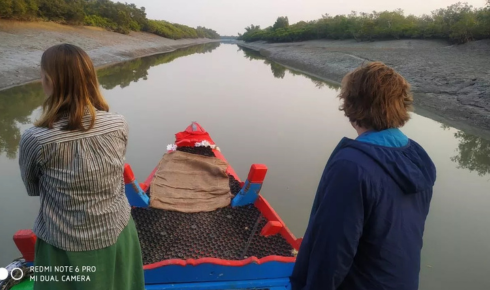If you are looking for an unforgettable experience filled with mystery, wildlife, and serenity, a sundarban trip is your perfect escape. Nestled in the southern region of West Bengal, the Sundarbans is a globally recognized UNESCO World Heritage Site, celebrated for being the largest mangrove forest on Earth. With its winding creeks, dense forests, and rich biodiversity, this magical destination offers a unique combination of adventure and tranquility that few places in the world can match.
The Allure of a Sundarban Trip
What makes a Sundarban trip so special? The answer lies in its rare blend of raw natural beauty and thrilling wildlife encounters. The region is most famous for being the natural habitat of the Royal Bengal Tiger. But it’s not just about tigers—this diverse ecosystem is also home to saltwater crocodiles, spotted deer, wild boars, snakes, otters, and more than 250 species of birds.
As you glide through the forest’s silent backwaters on a boat, surrounded by tall mangrove trees and echoing bird calls, you feel like you’ve entered another world—one where nature rules and humans are humble visitors.
Key Attractions During a Sundarban Trip
1. Boat Safari
One of the main highlights of your trip will be the boat safari. Unlike traditional jeep safaris, in the Sundarbans you explore the forest by water. These guided safaris take you deep into the mangrove creeks, offering breathtaking views and the chance to spot rare wildlife species in their natural habitat.
2. Watchtowers
There are several strategically located watchtowers, such as Sajnekhali, Dobanki, and Sudhanyakhali, where you can observe animals from a safe height. These towers are often surrounded by freshwater ponds, where animals come to drink, increasing your chances of a sighting.
3. Sajnekhali Wildlife Sanctuary
This sanctuary is the starting point for most Sundarban trips. It features a mangrove interpretation center, crocodile pond, and turtle breeding area. It’s also a great spot for birdwatching.
4. Local Villages and Culture
The villages surrounding the Sundarbans offer a fascinating glimpse into the lifestyle of the local communities who coexist with nature. Many tour packages include cultural performances like the Bonobibi play—a traditional folk drama that tells the story of the forest goddess Bonobibi and her protective role over villagers and honey collectors.
Best Time for a Sundarban Trip
The ideal time to plan your Sundarban adventure is between October and March. During these months, the weather is cooler and more comfortable for outdoor activities like safaris and sightseeing. The monsoon season (June to September) should be avoided due to heavy rainfall and unpredictable tides that can affect boat routes and accessibility.
Accommodation and Food
From budget eco-resorts to comfortable jungle lodges and deluxe houseboats, there are plenty of accommodation options available for travelers. Most places are equipped with basic amenities and are designed to blend naturally with the environment.
Food is typically Bengali cuisine, with a focus on locally caught fish and seasonal vegetables. Vegetarian options are also widely available, and meals are usually included in your travel package.
Travel Tips for a Safe and Enjoyable Trip
- Book your trip with a certified and experienced tour operator.
- Carry insect repellent, sunscreen, water, and essential medicines.
- Wear light, full-sleeve clothing and carry waterproof bags for electronics.
- Listen to your guide at all times, especially during safaris.
- Avoid plastic use and help keep the forest clean.
Conclusion
A Sundarban trip is more than just a holiday—it’s an immersive journey into one of the world’s most captivating ecosystems. With its stunning natural beauty, thrilling wildlife encounters, and rich cultural experiences, the Sundarbans has something to offer every kind of traveler.
Whether you’re a nature enthusiast, a wildlife photographer, or simply looking to reconnect with the wild, the Sundarbans is calling. Book your trip today and step into the heart of India’s most enchanting wilderness.











